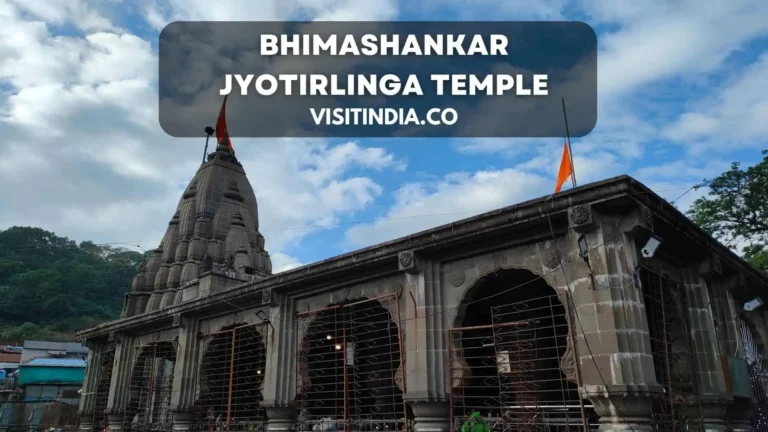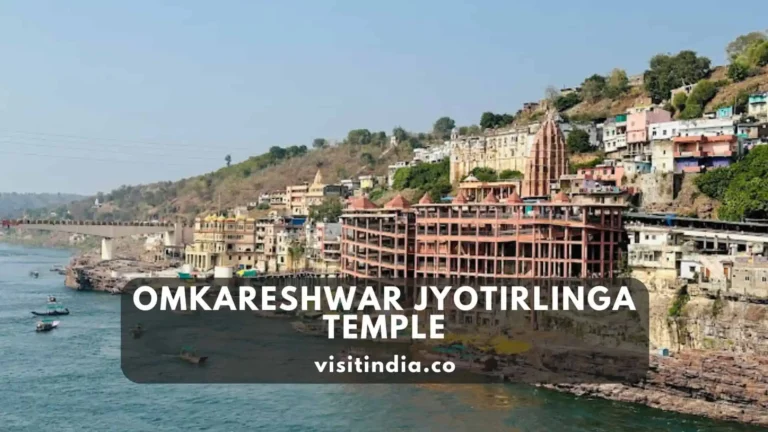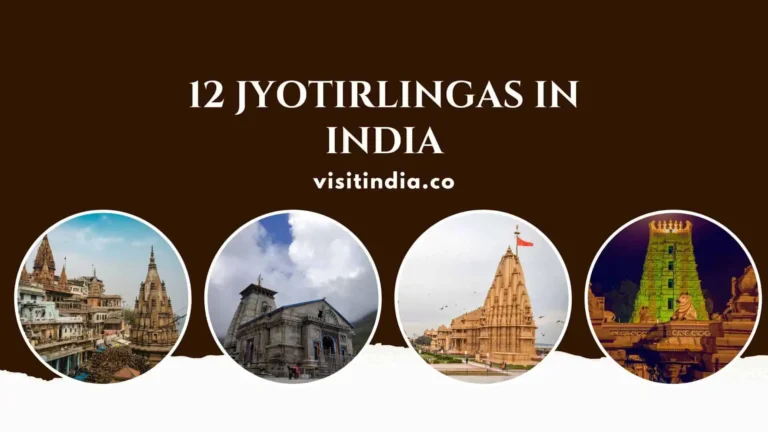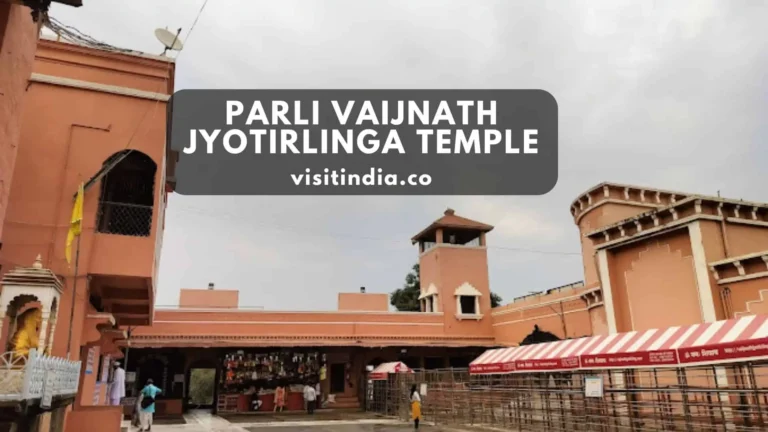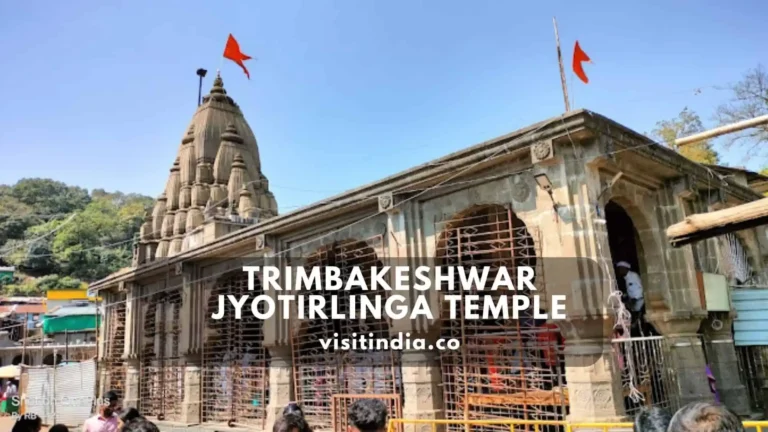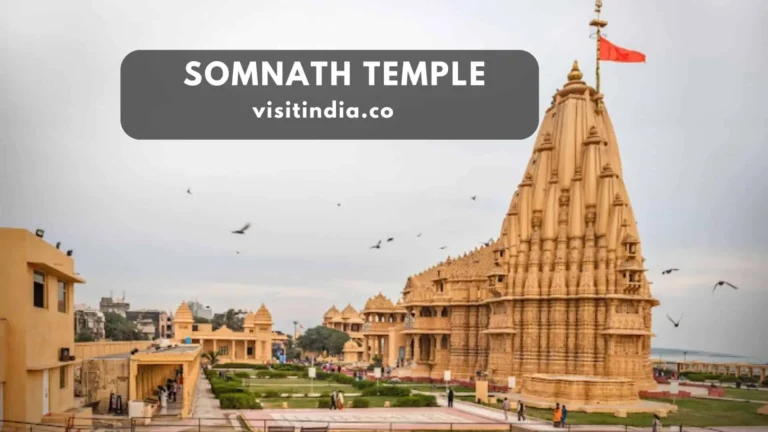Kedarnath Jyotirlinga Temple Timing, How to Reach, Significance, History
Welcome to our article on the fascinating Kedarnath Jyotirlinga Temple! Nestled amidst the majestic Himalayas, this sacred shrine holds a special place in the hearts of Lord Shiva devotees. With its rich history, mystical legends, and breathtaking surroundings, the Kedarnath Jyotirlinga Temple is a captivating destination that beckons pilgrims from far and wide.
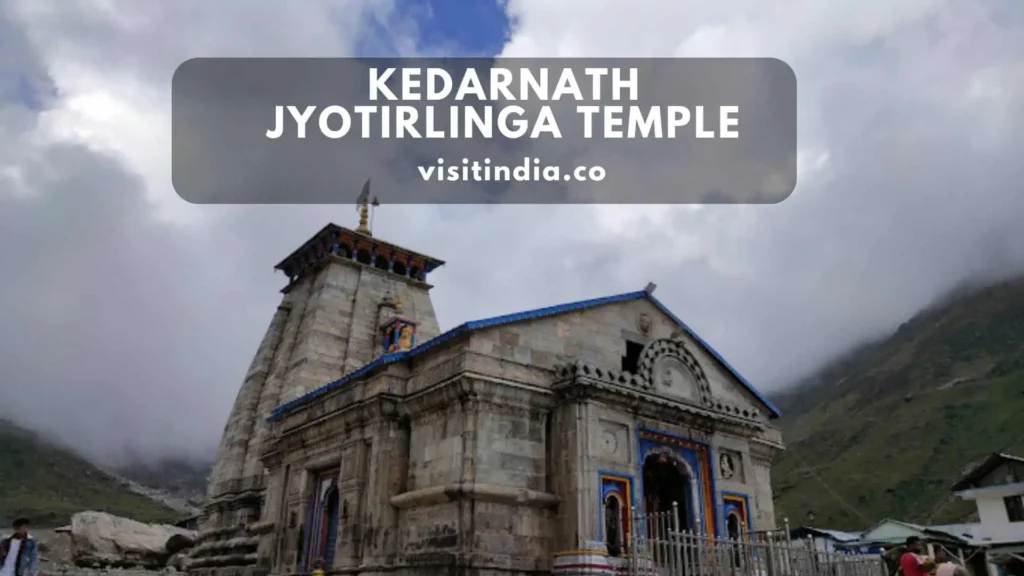
Situated in the serene state of Uttarakhand, the Kedarnath Temple is renowned as one of the most remote pilgrimage sites in India. Surrounded by the awe-inspiring Himalayan mountains and located near the origin of the sacred River Mandakini, this temple offers a truly divine experience.
As the eleventh of the 12 holy Jyotirlingas of Lord Shiva, Kedarnath holds immense spiritual significance and is considered one of the holiest shrines in Hinduism.
Consider reading: 12 Jyotirlingas in India Name, Location, Significance and Details
Kedarnath Jyotirlinga Temple Timings and Entry Fees
The Kedarnath Jyotirlinga Temple has specific timings for darshan (worship) and entry fees for various rituals. Here are the details:
Kedarnath Jyotirlinga Temple Timings:
- The temple opens only for six months in a year, from April to November when the sun enters the zodiac sign of Aries. It is closed when the sun enters Scorpio.
- During the open months, the temple has specific darshan timings.
- Visitors must plan to be at the temple before 3 pm, as the temple is closed for darshan between 3 pm and 5 pm. Before 3 pm, visitors can touch the idol and perform Abhishek (anointment) with ghee. After 5 pm, darshan is allowed from a distance.
- To attend the morning and evening poojas (worship), devotees are required to pay a specific amount.
Here are the details of some of the rituals and their costs per person:
- Mahabhishek: This ritual is performed to honor Lord Shiva and costs approximately INR 1700 per person.
- Rudrabhishek: This ritual is dedicated to Lord Shiva and is performed to remove obstacles and sins. It can cost around INR 1300 per person.
- Aartis and Poojas: Daily aartis are performed at the Kedarnath Jyotirlinga Temple. Additionally, devotees have the option to book a variety of poojas in advance, such as Mahabhishek, Rudrabhishek, Sampoorna Aarti, and Mahabhog. The costs for these rituals vary from as low as INR 170 to as high as INR 26,000.
Please note that the entry fees and rituals mentioned above are subject to change. It is advisable to check the latest information before planning your visit to the temple.
The Kedarnath Jyotirlinga Temple holds immense spiritual significance as one of the twelve holy Jyotirlingas of Lord Shiva. It is one of the most remote pilgrimage sites in India and attracts devotees from all over the world.
Consider reading: Grishneshwar Jyotirlinga Temple Timings, Entry Fee, How to Reach, History, Facts
How to Reach Kedarnath Jyotirlinga Temple
Kedarnath Jyotirlinga Temple, nestled in the majestic Himalayas of Uttarakhand, is one of the holiest Hindu shrines dedicated to Lord Shiva. This ancient temple holds immense significance not only for its religious importance but also for its remarkable architectural beauty. Here’s how you can reach Kedarnath Jyotirlinga Temple:
- By Air: The nearest airport to Kedarnath Jyotirlinga Temple is the Jolly Grant Airport in Dehradun, which is about 238 km away. From the airport, you can hire a taxi or take a bus to reach Gaurikund, the base point for the trek to the temple.
- By Rail: The nearest railway station to Kedarnath Jyotirlinga Temple is Rishikesh Railway Station, which is about 216 km away. From there, you can take a taxi or a bus to Gaurikund.
- By Road: Kedarnath Jyotirlinga Temple is well-connected by road. You can reach Gaurikund, the starting point of the trek, by taking a bus or hiring a taxi from major cities like Rishikesh, Haridwar, and Dehradun. From Gaurikund, you need to trek for about 16 km to reach the temple.
It is important to note that the temple is located at a high altitude, so it is advisable to prepare yourself physically and carry the necessary supplies for the trek.
The spiritual significance of Kedarnath Jyotirlinga Temple, being one of the twelve Jyotirlingas in India, attracts pilgrims from all over the world. Its remote location and challenging accessibility only add to its allure.
Consider reading: Kashi Vishwanath Temple Timings, Entry Fees, How to Reach, History, Facts, Significance
Best Time to Visit Kedarnath Jyotirlinga Temple
The Kedarnath Jyotirlinga Temple, being situated in the Himalayas, experiences extreme weather conditions throughout the year. Therefore, it’s important to plan your visit during the best time to ensure a safe and comfortable pilgrimage. Here’s some valuable information to help you choose the ideal time to visit the temple:
- Opening Months: The Kedarnath Jyotirlinga Temple opens its doors to devotees for only six months in a year, from April/May to October/November. During this time, the weather is relatively mild and conducive for undertaking the journey. However, it is important to note that the opening and closing dates may vary each year based on the auspicious Hindu calendar and prevailing weather conditions.
- Peak Season: The months of May and June, as well as October, are considered the peak season for visiting the temple. This is when pilgrims from all over the country flock to Kedarnath to seek blessings from Lord Shiva. The atmosphere is vibrant and the surrounding natural beauty is at its best during this time.
- Weather Conditions: It’s important to be aware of the weather conditions in Kedarnath before planning your visit. The temperature in Kedarnath can vary widely, ranging from pleasant during the day to freezing temperatures at night, especially in April, May, and October. It is advisable to carry warm clothing, including heavy woolen, to protect yourself from the cold.
- Avoiding Monsoon: The monsoon season, which typically occurs between June and September, brings heavy rainfall and landslides to the region. As a result, the trekking routes and roads leading to Kedarnath become hazardous and are often closed for safety reasons. Therefore, it is advisable to avoid planning your visit during these months.
- Pre and Post-Peak Season: If you prefer a quieter and less crowded experience, you may consider planning your visit just before or after the peak season. The months of April, early May, and September offer relatively fewer tourists, making it a good time to explore the temple and its surroundings in a more serene environment.
Consider reading: Omkareshwar Jyotirlinga Temple Timings, Parikrama, Distance, Facts, Significance
History of Kedarnath Jyotirlinga Temple
Mythological Roots
Nestled in the majestic Himalayas lies the Kedarnath Jyotirlinga Temple, a site steeped in deep mythological roots. This temple is revered as a crucial part of Hindu mythology, particularly linked to the epic tale of the Mahabharata. Post the infamous Kurukshetra War, the Pandavas sought redemption from Lord Shiva, only to find him transforming into a bull and eluding them.
The pursuit ended at Kedarnath, where Shiva’s hump was believed to have materialized. In honor of this divine manifestation, the Kedarnath Temple was erected, marking it as one of the most significant 12 Jyotirlingas in India – each a symbol of Lord Shiva’s presence.
Spiritual Journey and Pilgrimage
Kedarnath’s spiritual journey is not just about its mythological past but also its role in the present-day Char Dham Yatra. This pilgrimage circuit, also encompassing Badrinath, Yamunotri, and Gangotri, is a path of spiritual cleansing and salvation. Devotees embark on this challenging journey with a hope to absolve sins and achieve spiritual liberation.
Architectural History
The origins of Kedarnath Temple’s architecture trace back over a millennium, though its exact construction date remains a mystery. The temple has stood the test of time, enduring natural calamities like snowfalls, landslides, and earthquakes, necessitating numerous renovations and restorations.
Historical accounts often credit King Bhoj of Malwa (11th century) with the temple’s construction. By the 12th century, Kedarnath had emerged as a prominent pilgrimage site. An intriguing chapter in its history is the Little Ice Age (1300-1900), during which the temple remained concealed under snow for 400 years.
20th Century Renaissance
It was only in the 20th century that Kedarnath re-emerged into the limelight, gaining immense popularity and becoming an integral part of the Char Dham circuit. Today, it stands not just as a religious site but as a testament to resilience and spiritual endurance.
Architecture of Kedarnath Jyotirlinga Temple
Temple’s Structural Design
The Kedarnath Jyotirlinga Temple stands as a shining example of Uttarakhand’s distinctive temple architecture, primarily utilizing stone in its construction. Remarkably, this sacred edifice has endured numerous natural disasters, a testament to its resilient foundation and architectural ingenuity.
The temple complex is not just a singular structure but a congregation of spiritual sites, including the main temple, the Bhairav Temple, and the Shankaracharya Samadhi. Each element within this complex contributes to the temple’s spiritual aura and architectural brilliance.
Diverse Deities and Natural Backdrops
The main temple, a sanctuary dedicated to Lord Shiva, also houses idols of other revered Hindu deities such as Parvati, Krishna, the Pandavas, and Draupadi, creating a holistic representation of Hindu mythology. The temple’s setting is nothing short of magical, surrounded by snow-clad peaks and lush grasslands, with the holy River Mandakini flowing gracefully nearby.
Sanctum’s Spiritual Essence
At the heart of the Kedarnath Temple lies the main sanctum, enshrining the Sadashiva form of Lord Shiva through a conical Shiva Lingam. This sacred space is further adorned with intricate carvings and depictions of various deities, narrating tales from ancient mythology. The entrance to the temple, marked by an imposing gate and exquisitely crafted pillars, leads devotees into a world of tranquility and devotion.
Nandi’s Majestic Presence
Guarding the temple’s entrance is a majestic Nandi Bull statue, symbolizing Shiva’s vahana (vehicle), which enhances the temple’s grandeur. Inside, the pillared hall is an artistic marvel, adorned with detailed carvings of Parvati, the Pandavas, Lord Krishna, and other deities, reflecting the rich cultural tapestry of Hinduism.
The Kedarnath Jyotirlinga Temple is not only an architectural marvel but also holds immense religious significance as one of the twelve Jyotirlingas in India. Its construction and design have stood the test of time, making it a must-visit destination for devotees and tourists alike.
Consider reading: Mallikarjuna Jyotirlinga Temple Srisailam Timings, How to Reach, History, Facts, Nearby Places to Visit
Significance of Kedarnath Jyotirlinga Temple
The Abode of Lord Shiva
The Kedarnath Jyotirlinga Temple is not only one of the esteemed twelve Jyotirlingas in India but also a beacon of spirituality for Lord Shiva’s devotees. Its remote location and the challenging journey required to reach it only enhance its sacredness.
As per Hindu traditions, Lord Shiva’s presence in the form of a lingam at Kedarnath elevates this site to one of profound spiritual significance. Devotees believe that a pilgrimage to Kedarnath can lead to moksha, or liberation from the cycle of birth and death, drawing millions to its holy grounds annually.
A Pilgrimage of Spiritual Rejuvenation
Situated in the Himalayan state of Uttarakhand, Kedarnath transcends mere religious importance, standing tall as a coveted pilgrimage destination. The temple’s location amidst stunning natural vistas offers pilgrims not just a religious journey, but a profound spiritual experience.
It’s considered a once-in-a-lifetime opportunity for Shiva devotees to deepen their faith and seek divine blessings for their overall well-being.
Symbol of Resilience and Devotion
Despite the trials of nature, Kedarnath Temple’s resilience is emblematic of unwavering faith and spiritual endurance. It is said to have been built by the Pandavas as a testament to their devotion to Lord Shiva post the Mahabharata war.
The temple’s name, translating to “Lord of the Field,” further connects it to nature, highlighting Lord Shiva’s role as a cosmic transformer and destroyer. For pilgrims, a visit to Kedarnath is not just an act of reverence but a journey to seek Shiva’s blessings for strength, protection, and spiritual growth.
Consider reading: Parli Vaijnath Jyotirlinga Temple Timings, How to Reach, Rituals and Festivals
Devotees of Kedarnath Jyotirlinga Temple
At Kedarnath Jyotirlinga Temple, devotees from all walks of life flock to seek divine blessings and spiritual enlightenment. Let’s explore the different aspects that make the temple a significant pilgrimage destination.
Famous Pilgrims
- Pandavas: According to Hindu mythology, the Pandavas, the heroes of the epic Mahabharata, are believed to have built the Kedarnath temple. They undertook a journey to seek forgiveness from Lord Shiva for the sins committed during the war.
- Adi Shankaracharya: The revered saint and philosopher Adi Shankaracharya is said to have visited Kedarnath and established the Shankaracharya Samadhi near the temple. He played a crucial role in propagating the significance of Kedarnath Jyotirlinga and Hindu philosophy.
- Pilgrims from all over the world: Kedarnath Jyotirlinga Temple attracts millions of devotees every year, including pilgrims from various corners of the globe. They come to experience profound spirituality and connect with the divine in this sacred place.
Spiritual Practices
- Shiva Worship: Devotees offer prayers, perform rituals, and engage in meditation to seek blessings from Lord Shiva. The tranquil atmosphere and awe-inspiring surroundings of the temple provide the perfect setting for spiritual practices and introspection.
- Parikrama: Many devotees undertake the Parikrama, a ritualistic circumambulation of the temple, as a mark of devotion and to seek blessings. The Parikrama route offers captivating views of the Himalayas, adding to the spiritual journey.
- Meditation and Yoga: The serene environment of Kedarnath provides an ideal backdrop for meditation and practicing yoga. Many devotees engage in these practices to calm the mind, rejuvenate the body, and deepen their spiritual connection.
- Kedarnath Yatra: The annual Kedarnath Yatra, held during May and June, is a significant pilgrimage event. Devotees undertake the arduous trek to Kedarnath, braving the challenging terrain to pay homage to Lord Shiva and experience the divine energy of the place.
- Mahashivratri: The festival of Mahashivratri is celebrated with great enthusiasm at Kedarnath Jyotirlinga Temple. Devotees throng the temple to offer prayers and perform special rituals to honor Lord Shiva.
- Char Dham Yatra: Kedarnath Jyotirlinga Temple is an integral part of the Char Dham Yatra, which includes Badrinath, Yamunotri, and Gangotri. Pilgrims embark on this sacred journey to attain spiritual purification and seek blessings from the deities.
The significance of Kedarnath Jyotirlinga Temple as one of the twelve Jyotirlingas in India, combined with the presence of famous pilgrims, the practice of spiritual rituals, and the celebration of festivals, makes it a cherished destination for devotees seeking spiritual enlightenment and a connection with the divine.
Stay tuned as we continue to unfold the wonders of Kedarnath Jyotirlinga Temple and its profound spiritual significance.
Consider reading: Somnath Temple Timings, History, Nearest Railway Station and Airport
Places to Visit Near Kedarnath Jyotirlinga Temple
If you’re planning a visit to the Kedarnath Jyotirlinga Temple, there are several places nearby that you shouldn’t miss. Here are some of the top attractions to explore during your trip:
- Vasuki Tal: Located at an altitude of 4,150 meters, Vasuki Tal is a stunning high-altitude lake situated just 6 kilometers from Kedarnath. Surrounded by snow-capped peaks, this serene lake offers breathtaking views and is a popular spot among nature lovers and adventure enthusiasts.
- Chorabari Tal: Also known as Gandhi Sarovar, Chorabari Tal is another beautiful lake situated just 4 kilometers from Kedarnath. Named after the Chorabari Glacier, which is the source of the Mandakini River, this holy lake holds immense religious significance and is believed to be the spot where Mahatma Gandhi’s ashes were immersed.
- Gaurikund: Gaurikund is the starting point of the trek to Kedarnath and is considered a sacred spot. It is believed to be the place where Goddess Parvati meditated to win Lord Shiva’s heart and is adorned with hot water springs. Pilgrims often take a dip in these revitalizing waters before embarking on their journey to the temple.
- Ghandruk Village: For those seeking to explore the local culture and traditions, a visit to Ghandruk Village is a must. Situated at a distance of approximately 20 kilometers from Kedarnath, this quaint village offers breathtaking views of the Annapurna and Machhapuchhre Himalayan ranges. You can immerse yourself in authentic Nepali culture and hospitality while enjoying the spectacular mountain vistas.
- Triyuginarayan: Located around 25 kilometers from Kedarnath, Triyuginarayan is a small village famous for its ancient temple dedicated to Lord Vishnu. According to Hindu mythology, this temple is believed to be the place where Lord Shiva and Goddess Parvati got married. The temple complex also houses a sacred eternal flame that has been burning for centuries.
Facts About Kedarnath Jyotirlinga
Kedarnath Jyotirlinga is a significant pilgrimage site located in the Garhwal Himalayan mountain range in the Indian state of Uttarakhand. Here are some important facts about Kedarnath Jyotirlinga:
- One of the 12 Jyotirlingas in India: Kedarnath Jyotirlinga is one of the 12 Jyotirlinga shrines of Lord Shiva in India. The Jyotirlingas are considered to be the embodiment of Lord Shiva’s divinity and significance.
- Holiest Shrines in Hinduism: Kedarnath Jyotirlinga is considered one of the holiest shrines in Hinduism. It holds immense religious significance and attracts thousands of devotees each year.
- Located at a high altitude: The temple is situated at an altitude of 3583 meters above sea level, making it one of the highest Jyotirlinga shrines in the country. The breathtaking surroundings and the challenging trek add to the spiritual experience.
- The place of salvation: According to Hindu belief, Lord Shiva appeared as a Jyotirlinga, a column of light, at this sacred spot. Worshipping at Kedarnath Jyotirlinga is believed to bring about salvation and liberation from the cycle of birth and death.
- Part of the Char Dham Yatra: Kedarnath Jyotirlinga is an integral part of the Char Dham Yatra, which includes visiting the four major pilgrimage sites in Uttarakhand, namely, Kedarnath, Badrinath, Gangotri, and Yamunotri. It is believed that undertaking this yatra will cleanse the soul and bring spiritual upliftment.
With its rich history, religious significance, and breathtaking location, Kedarnath Jyotirlinga stands as a testament to the devotion of millions of Lord Shiva’s devotees. Whether one is seeking spiritual enlightenment or simply awe-inspiring beauty, a visit to Kedarnath Jyotirlinga is an experience of a lifetime.
Final Thoughts on Kedarnath Jyotirlinga Temple
In this article, we have explored the Kedarnath Jyotirlinga Temple, delving into its unique architecture, religious significance, and spiritual practices. As one of the 12 Jyotirlinga shrines dedicated to Lord Shiva in India, Kedarnath holds a special place in the hearts of devotees.
Situated at a breathtakingly high altitude, this temple is not only a place of worship but also a testament to the indomitable human spirit. Its inclusion in the revered Char Dham Yatra further adds to its significance.
Visiting Kedarnath Jyotirlinga is not just a religious pilgrimage; it is a spiritual journey that offers a profound experience. The devotion and faith of the worshippers, coupled with the awe-inspiring beauty of the surroundings, create an atmosphere of tranquility and serenity.
Plan your visit to this sacred temple and immerse yourself in the divine aura of Kedarnath Jyotirlinga, where spirituality and natural beauty converge in perfect harmony.
